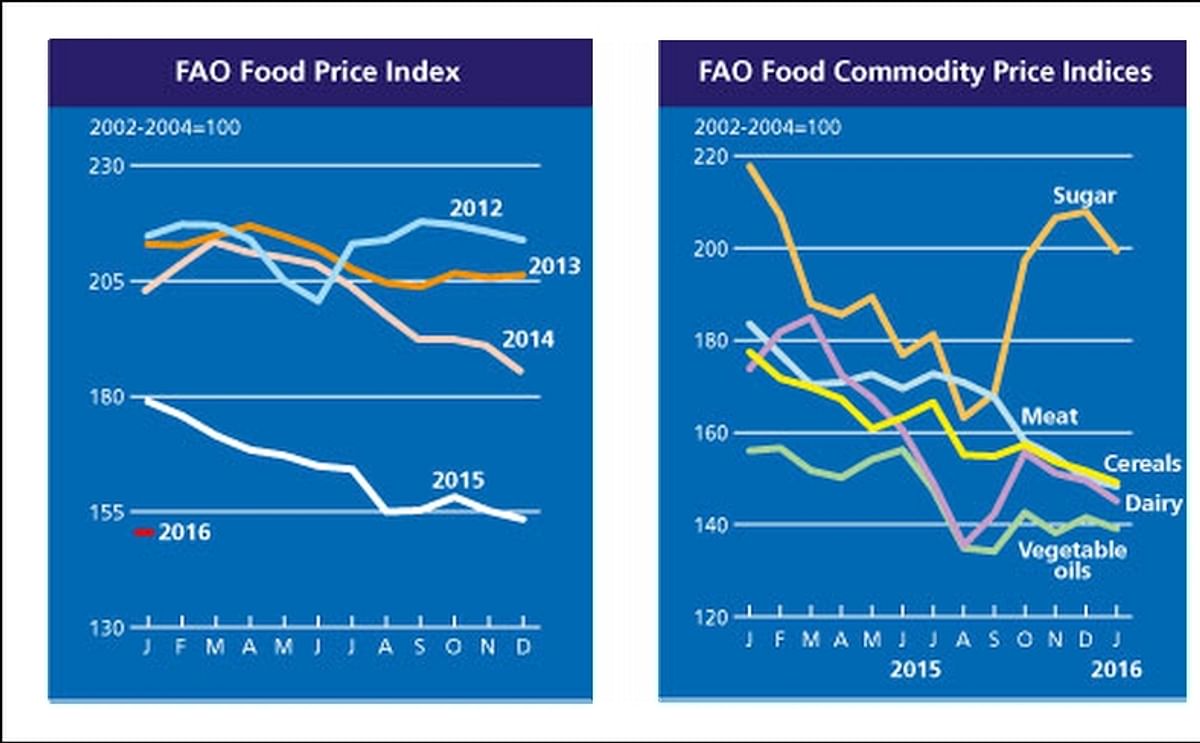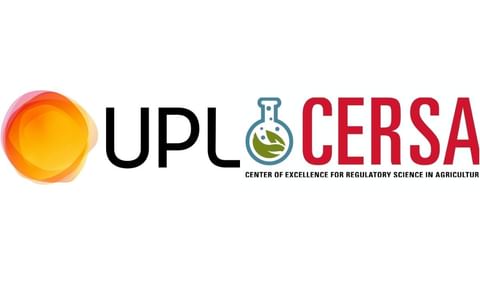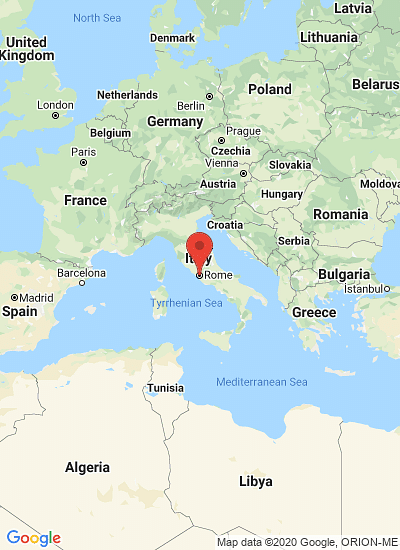The FAO Food Price Index (FFPI) averaged 150.4 points in January 2016, down almost 3 points (1.9 percent) from December and as much as 29 points (16 percent) below January 2015.
The prices of all the commodities tracked by the Index fell, with sugar and dairy products registering the steepest declines.
The FAO Cereal Price Index averaged 149.1 points in January, down 2.5 points (1.7 percent) from December. Ample global supplies, increased competition for export markets and a strong US dollar continued to weigh on international wheat and maize prices, with the US maize quotations falling to multi-year lows. Rice prices declined only marginally.
The FAO Vegetable Oil Price Index averaged 139.1 points in January, down 2.4 points (1.7 percent) from December. The slide was mainly caused by a marked drop in soyoil prices, reflecting expectations of ample global soybean supplies, notwithstanding lower than earlier anticipated production in the United States and Brazil. International palm oil prices were stable, as subdued global import demand was counter balanced by prospects of production slowdowns in the coming months.
The FAO Dairy Price Index averaged 145.1 points in January, down 4.4 points (3.0 percent) from December. Large winter milk production in the EU, better than anticipated availability in Oceania and torpid import demand have caused international prices of all the dairy commodities covered by the Index to dip, with Whole Milk Powder (WMP) being the most affected.
The FAO Meat Price Index averaged 148.3 points in January, down 1.7 points (1.1 percent) from its December revised value. Quotations fell for most categories, with the exception of pigmeat, which was stable, mainly due to the opening of EU aid to private storage in January. Sheepmeat prices were sharply lower, reflecting the beginning of the peak production period in Oceania, while a lacklustre demand weighed on the prices of poultry and bovine meat.
The FAO Sugar Price Index averaged 199.4 points in January, down 8.4 points (4.1 percent) from December, marking the first decline after four months of steady rises. The decrease was prompted by better than expected crop conditions in Brazil, the world´s leading sugar producer and exporter. Prospects for reduced sugar outputs in India, Thailand, South Africa and China were not sufficient to reverse the price fall.
- Nieuws
- Trends in landbouw en voedsel
- The FAO Food...
The FAO Food Price Index starts the new year with another decline
Inloggen or Inschrijven to use this flag.

februari 08, 2016
Bron
Food and Agriculture Organization of the United Nations (FAO)
Like to receive news like this by email? Join and Subscribe!
NEW! Join Our BlueSky Channel for regular updates!
Related Topics:
Uitgelichte Bedrijven
Related News

juni 12, 2025
Polysense raises EUR 2 million to spice the food industry with AI to become more sustainable and profitable
Polysense, a Belgian technology start-up, raised EUR 2 million (USD 2.3 million) from tech entrepreneurs to further disrupt the food industry. The company specialises in AI solutions for production processes to reduce waste and increase efficiency. 
juni 08, 2025
TNA Solutions Marks World Food Safety Day with Expert Insights from Steve Burgess
In recognition of World Food Safety Day on June 7, TNA Solutions has presented a timely expert blog titled “Engineering Better Food Safety” by Steve Burgess, General Manager – Europe & Africa at TNA Solutions.
april 30, 2025
Enactus UPEI's Spuds2Suds: Turning Potato Waste into Sustainable Soap and Community Support
UPEI students created Spuds2Suds, a soap made from surplus PEI potatoes. The eco-friendly project won top prizes at Enactus Regionals, donates a bar to food banks for each sold, and is now available locally. Next stop: Enactus Nationals in Calgary.Latest News
Sponsored Content
Sponsored Content
Sponsored Content
Sponsored Content
Waar
Sponsored Content







